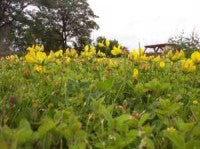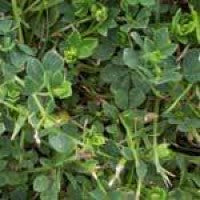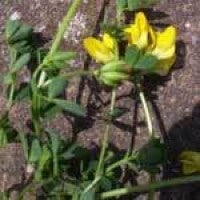Weed of the Week: Bird's foot -trefoil (Lotus corniculatus L.)
Weed of the Week: Birdsfoot trefoil (Lotus corniculatus L.)
By Laurence Gale

What is a weed? By definition a weed is a plant that is growing in the wrong place. Weeds take valuable space, water, sunlight and nutrients that may otherwise be accessible to important crops, in our case turf grasses. Weeds not only compete for these resources they can disfigure and cause problems to playing surfaces.
Weeds are very good competitors and take advantage of any opportunities to colonise turf situations, particularly when the sward is under stress and weak, leaving bare soil areas for weeds to populate. Weeds have many mechanisms and characteristics that enable them to do this, having thick waxy cuticle leaves that can be resistant to some chemicals, fast reproduction methods, the ability to reseed in 6 week cycles and deep tap roots enabling the weed to survive in compacted dry ground conditions.
Weeds have one of three life cycles: annual; biennial or perennial.
- Annual weeds: Live for a single season. These weeds germinate from seed in the spring or summer, flower and then die.
- Biennial weeds: Live for two seasons. During the first growing season, these weeds remain in a vegetative stage and, in the following year, produce flowers, set seed and die.
- Perennial weeds: Live for multiple seasons and flower more than once. Perennial structures (rhizomes, stolons, crowns, entire plants or roots) survive from year to year.
Some weeds may be harmful to the environment or noxious to your regional ecology. For example Japanese Knot weed (Fallopia Japonica) is fast becoming a major weed problem on road side verges and urban landscape areas, a very difficult weed to eradicate. It is very important to recognise weeds and seek effective controls methods to eradicate them from our facilities.
Weeds can also be used as an indicator of soil conditions. For example, knotweed and plantains both indicate soil compaction because they can maintain adequate root respiration at lower oxygen diffusion levels than other plants. Different weeds tolerate different soil conditions, some are alkaline loving and others acid loving. Getting to understand and recognise the physiology of these plants will help you become better turfgrass managers.
This weeks weed is: Bird's foot-trefoil (Lotus corniculatus L.)
|
Scientific name
Family Life cycle |
Lotus corniculatus L
Fabaceae Perennial |
|
| Form / Appearance | Birdsfoot trefoil is a hardy perennial, finely stemmed, leafy legume plant, which has a similar flower to honeysuckle. |

|
| Roots | The plant has a deep, branched root system and tolerates both wet and moderately dry soil conditions. | |
| Flowers | Flowers usually appear in late April or early May, and flowering continues until mid September. |

|
| Leaves | The leaves are sessile along the stems, each with 5 linear to oval leaflets. Stems are decumbent unless in fairly dense stands, reaching 250-400mm or more in length. |

|
| Reproductive method |
The plant reproduces from seed or vegetatively from its creeping root system. The plant colonises unmanaged areas, generally road verges, waste open spaces and poorly managed lawns. |

|
| Habitat | Birdsfoot trefoil is found in all sorts of grassland, including, roadsides, wasteland and riverbanks, especially where the soil is well drained. | |
| Miscellaneous info | Other names for this plant include bloomfell, cat's clover, crowtoes, garden birdsfoot trefoil, ground honeysuckle. |

|
| Cultural Control | This plant can be very invasive and all attempts to remove by hand or mechanical means must be thorough, removing all vegetation and roots from the ground. | |
| Chemical Control |
Apply selective broadleaf herbicides when plant growth is active. There are a number of products available for controlling broad leaf weeds in established turf.
These chemicals are best used when the weeds are actively growing, usually between April-October.
These herbicides are usually applied as a liquid using watering cans, knapsack sprayers and vehicle mounted sprayers. Ensure you follow manufacturer's directions, health & safety and product data sheets, and comply with COSHH regulations, when using these chemicals. |
